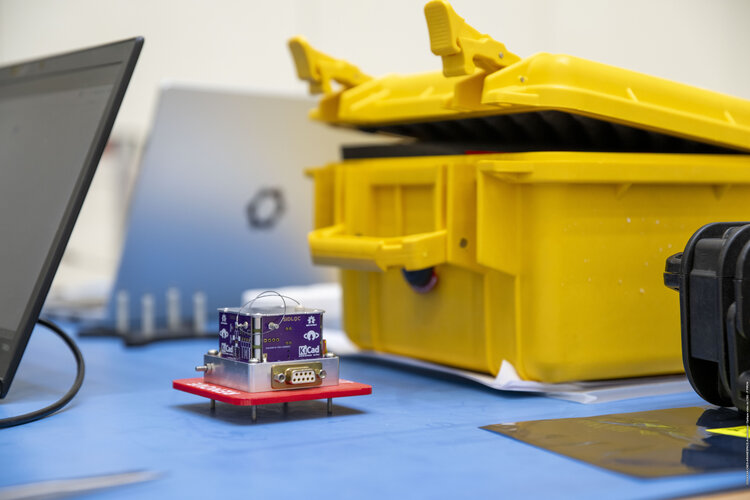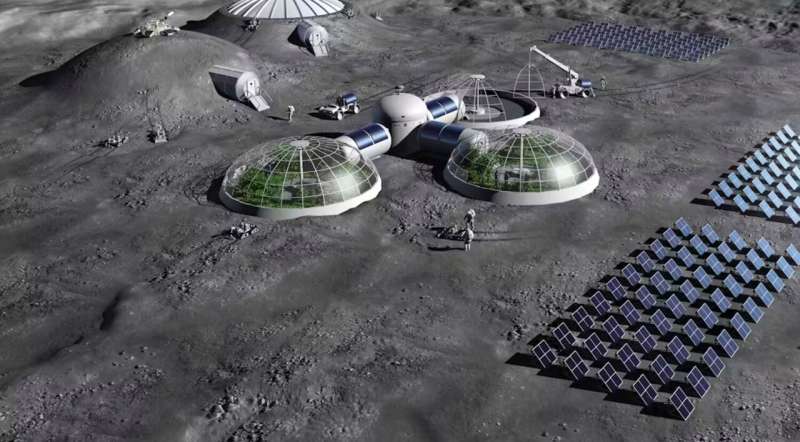
Copernical Team
Sidus Space AI Platform Achieves First Data Transmission from LizzieSat-1
 Sidus Space, Inc. (NASDAQ: SIDU) has announced that its AI delivery platform, FeatherEdge, successfully transmitted data back to Earth for the first time on May 24, 2024.
The LizzieSat-1 mission showcased FeatherEdge's capability to upload new algorithms post-launch, run a machine vision algorithm on a hardware accelerator, and downlink health and status data to the Sidus Mission Control C
Sidus Space, Inc. (NASDAQ: SIDU) has announced that its AI delivery platform, FeatherEdge, successfully transmitted data back to Earth for the first time on May 24, 2024.
The LizzieSat-1 mission showcased FeatherEdge's capability to upload new algorithms post-launch, run a machine vision algorithm on a hardware accelerator, and downlink health and status data to the Sidus Mission Control C Wallaroo.AI Joins US Space Force SDA TAP Lab Apollo Accelerator Program
 Wallaroo.AI, a company specializing in scalable AI inference solutions, has been selected for the US Space Force (USSF) SDA TAP Lab Apollo Accelerator program in Colorado Springs. Wallaroo.AI, a two-time SpaceWERX Orbital Prime awardee, continues to lead in technological innovation aimed at enhancing the security and functionality of aerospace and defense systems for the United States, its allie
Wallaroo.AI, a company specializing in scalable AI inference solutions, has been selected for the US Space Force (USSF) SDA TAP Lab Apollo Accelerator program in Colorado Springs. Wallaroo.AI, a two-time SpaceWERX Orbital Prime awardee, continues to lead in technological innovation aimed at enhancing the security and functionality of aerospace and defense systems for the United States, its allie NASA's Webb Telescope Identifies Most Distant Galaxy
 Over the last two years, scientists have used NASA's James Webb Space Telescope (JWST) to explore Cosmic Dawn, the period shortly after the big bang when the first galaxies were born. These early galaxies offer crucial insights into the evolution of gas, stars, and black holes in the young universe. In October 2023 and January 2024, an international team of astronomers utilized Webb to observe g
Over the last two years, scientists have used NASA's James Webb Space Telescope (JWST) to explore Cosmic Dawn, the period shortly after the big bang when the first galaxies were born. These early galaxies offer crucial insights into the evolution of gas, stars, and black holes in the young universe. In October 2023 and January 2024, an international team of astronomers utilized Webb to observe g New Earth-Based Telescope Images of Jupiter's Moon Io Match Spacecraft Quality
 New images of Jupiter's moon Io, captured by the Large Binocular Telescope (LBT) on Mount Graham in Arizona, present the highest resolution of Io achieved with an Earth-based instrument. This feat was made possible by the SHARK-VIS instrument and the LBT's adaptive optics system, which counteracts atmospheric turbulence.
The images, to be published in Geophysical Research Letters, show sur
New images of Jupiter's moon Io, captured by the Large Binocular Telescope (LBT) on Mount Graham in Arizona, present the highest resolution of Io achieved with an Earth-based instrument. This feat was made possible by the SHARK-VIS instrument and the LBT's adaptive optics system, which counteracts atmospheric turbulence.
The images, to be published in Geophysical Research Letters, show sur Asteroid Dinkinesh Shows Complex History in Lucy Flyby
 NASA's Lucy spacecraft, led by the Southwest Research Institute (SwRI), discovered notable geological features on the main belt asteroid Dinkinesh during its flyby last November. The half-mile-wide asteroid revealed a trough and ridge structure, as well as a contact binary satellite, marking a significant find.
The data indicated a dramatic history involving sudden breakups and transformat
NASA's Lucy spacecraft, led by the Southwest Research Institute (SwRI), discovered notable geological features on the main belt asteroid Dinkinesh during its flyby last November. The half-mile-wide asteroid revealed a trough and ridge structure, as well as a contact binary satellite, marking a significant find.
The data indicated a dramatic history involving sudden breakups and transformat INNOSPACE to Launch Brazilian Satellites and Inertial System on HANBIT-Nano Rocket
 INNOSPACE, a South Korean private spaceflight startup producing small satellite launch vehicles, has signed new launch service agreements with the Federal University of Maranhao (UFMA) and Castro Leite Consultoria LTDA (CLC). This mission will use the HANBIT-Nano launch vehicle from the Alcantara Space Center in Brazil in the first half of 2025.
The mission will deploy picosatellites devel
INNOSPACE, a South Korean private spaceflight startup producing small satellite launch vehicles, has signed new launch service agreements with the Federal University of Maranhao (UFMA) and Castro Leite Consultoria LTDA (CLC). This mission will use the HANBIT-Nano launch vehicle from the Alcantara Space Center in Brazil in the first half of 2025.
The mission will deploy picosatellites devel German company HyImpulse plans additional South Australia launches
 Southern Launch and HyImpulse have signed a Memorandum of Understanding (MoU) for more missions from the Koonibba Test Range and to explore using the Whalers Way Orbital Launch Complex for future launches of HyImpulse's SL1 orbital vehicle.
The MoU follows a successful launch campaign where HyImpulse completed the maiden launch of their 11.5-meter-tall single-stage SR75 rocket from Souther
Southern Launch and HyImpulse have signed a Memorandum of Understanding (MoU) for more missions from the Koonibba Test Range and to explore using the Whalers Way Orbital Launch Complex for future launches of HyImpulse's SL1 orbital vehicle.
The MoU follows a successful launch campaign where HyImpulse completed the maiden launch of their 11.5-meter-tall single-stage SR75 rocket from Souther YPSat checked in for Ariane 6 flight
 Image:
YPSat checked in for Ariane 6 flight
Image:
YPSat checked in for Ariane 6 flight Ariane 6 launches SIDLOC: opening up tools for safer space

The rush to return humans to the moon and build lunar bases could threaten opportunities for astronomy

The 2020s have already seen many lunar landing attempts, although several of them have crashed or toppled over. With all the excitement surrounding the prospect of humans returning to the moon, both commercial interests and scientists stand to gain.
The moon is uniquely suitable for researchers to build telescopes they can't put on Earth because it doesn't have as much satellite interference as Earth, nor a magnetic field blocking out radio waves. But only recently have astronomers like me started thinking about potential conflicts between the desire to expand knowledge of the universe on one side and geopolitical rivalries and commercial gain on the other, and how to balance those interests.

